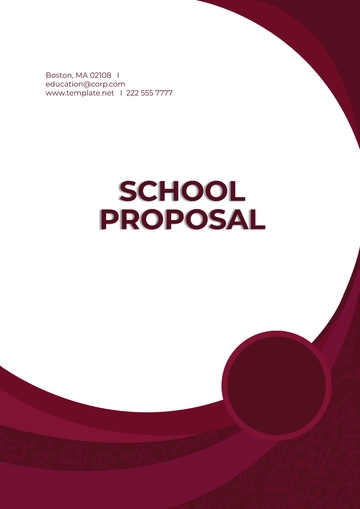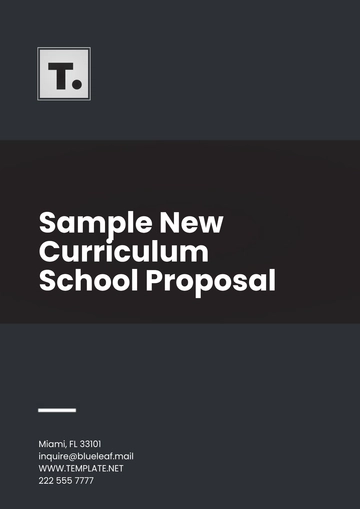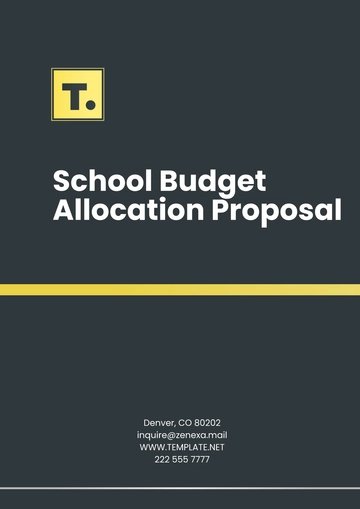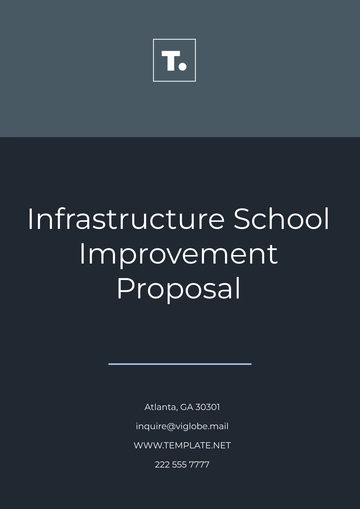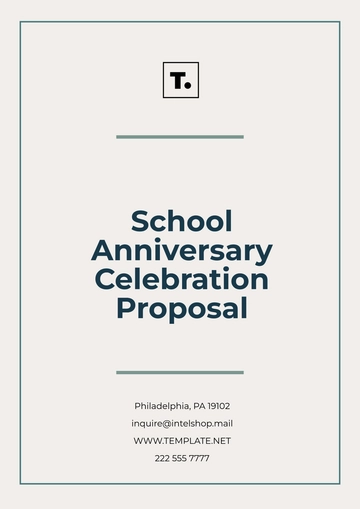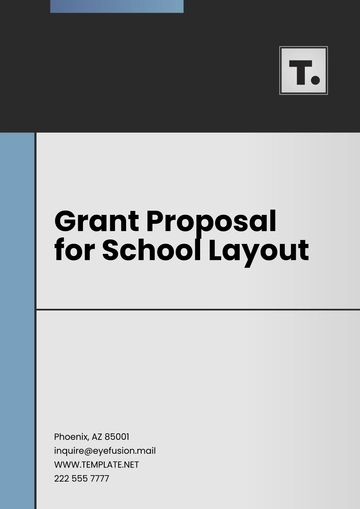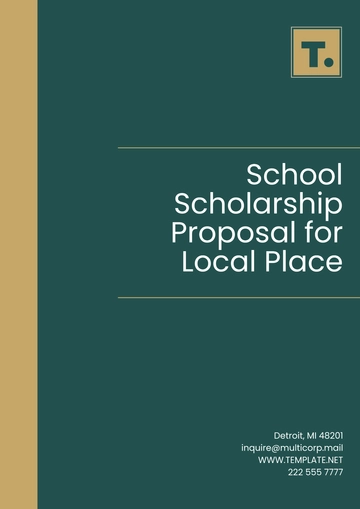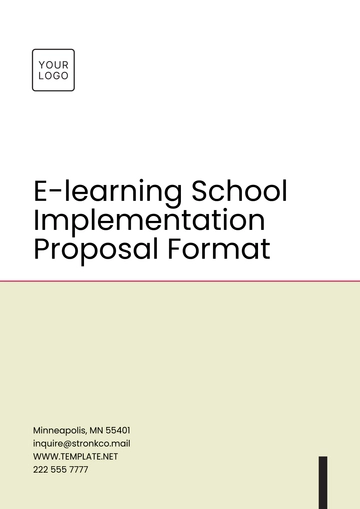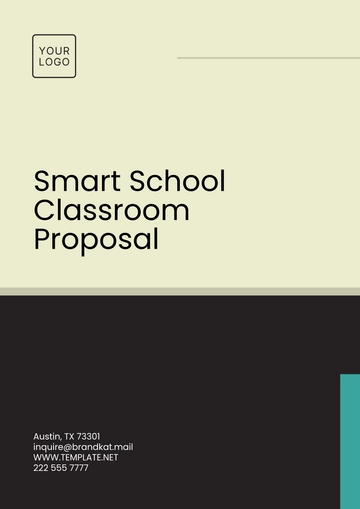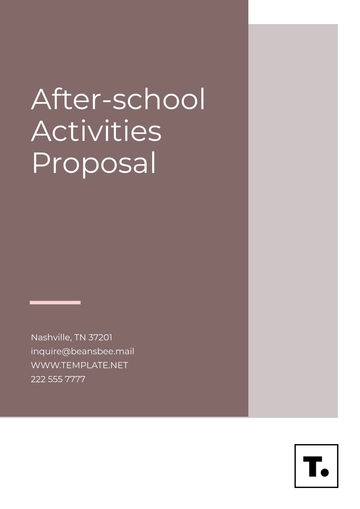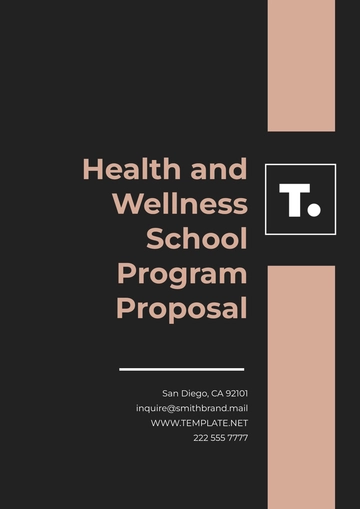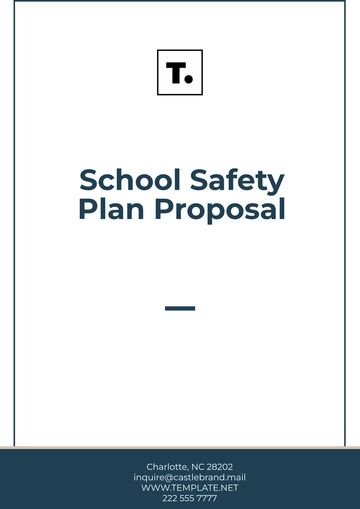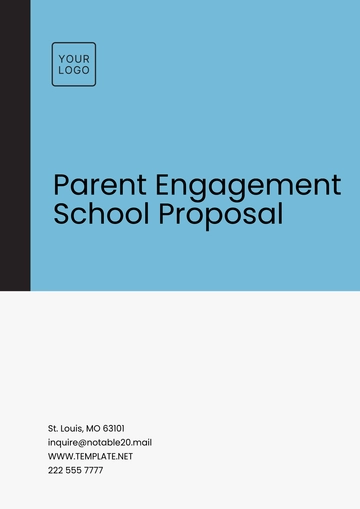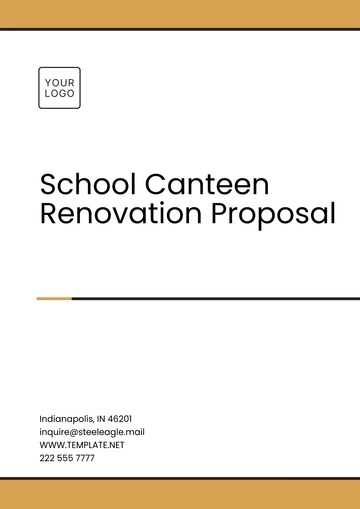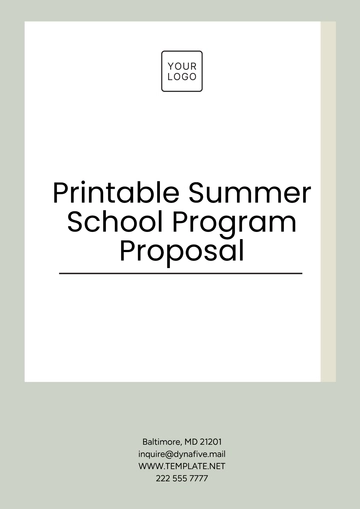Free School Work Proposal

I. Introduction
A. Overview of the Program
Brief Description of the STEM Enrichment Program
The Innovative STEM Enrichment Program is designed to enhance the existing STEM curriculum for students in grades 6-8. The program will offer hands-on learning experiences, cutting-edge technological tools, and real-world problem-solving activities to foster a deeper understanding of science, technology, engineering, and mathematics.
Importance of STEM Education in Modern Curriculum
The significance of STEM education, which encompasses science, technology, engineering, and mathematics, lies in its fundamental role in equipping students with the knowledge and abilities necessary to navigate and excel in a world that is continuously being transformed by technological advancements. By integrating advanced concepts from these disciplines into the educational curriculum, we provide students with the tools to develop critical thinking skills, foster creativity, and enhance their problem-solving capabilities.
These attributes are indispensable for success in the various and evolving career paths that the future holds. Thus, a strong emphasis on STEM education prepares students not just for the jobs of today, but for the dynamic and diverse career opportunities that lie ahead.
B. Rationale
Current Gaps in STEM Education
Despite the increasing focus on Science, Technology, Engineering, and Mathematics (STEM) education, our present academic curriculum is deficient in providing adequate hands-on experiences and opportunities to apply theoretical knowledge to real-world scenarios. This deficiency creates a significant gap that ultimately restricts students' engagement with and comprehension of the various disciplines within the STEM fields.
Benefits of Enhancing STEM Learning
By implementing and developing this program aimed at enhancing STEM (Science, Technology, Engineering, and Mathematics) education, there will be a significant increase in student interest and enthusiasm for pursuing careers within these fields. Furthermore, it is expected that their academic performance and achievements in STEM-related subjects will see notable improvements. Alongside these benefits, the program will also play a crucial role in fostering and developing essential skills required for the 21st century, such as critical thinking, problem-solving, and technological literacy.
C. Goals and Objectives
Primary Goals of the Program
To deepen students' understanding of STEM concepts through interactive and experiential learning.
To inspire a lifelong interest in STEM fields.
To prepare students for advanced STEM courses and careers.
Specific, Measurable Objectives
Increase student participation in STEM activities by 30% within the first year.
Improve average STEM test scores by 15% by the end of the program.
Conduct at least three major STEM projects annually, with participation from all enrolled students.
II. Background and Literature Review
A. Current State of STEM Education
Summary of Existing STEM Programs
Current STEM programs primarily focus on theoretical knowledge with limited practical application. They often lack the integration of modern technology and real-world problem-solving scenarios.
Identified Needs and Opportunities for Improvement
There is a clear need for a more engaging and applied STEM curriculum that connects classroom learning to real-world challenges and careers.
B. Supporting Research
Evidence of the Effectiveness of STEM Enrichment Programs
Research shows that students engaged in STEM enrichment programs exhibit higher academic achievement, greater interest in STEM careers, and improved problem-solving skills (Smith et al., 2020).
Case Studies or Examples of Successful Implementations
The [Program Name], implemented in various schools across the country, has successfully increased student interest and performance in STEM subjects through hands-on projects and industry partnerships (Johnson & Lee, [Yeear]).
III. Program Description
A. Target Audience
Grade levels and student demographics
The program targets students in grades 6-8, focusing on diverse demographics to ensure inclusivity and equal opportunity for all students interested in STEM.
Selection criteria for participation
Students will be selected based on their interest in STEM, academic performance in related subjects, and teacher recommendations. Special consideration will be given to underrepresented groups in STEM fields.
B. Program Structure
Curriculum Design
Core subjects and Topics Covered
The curriculum will cover advanced topics in biology, chemistry, physics, engineering, and computer science, with a focus on practical applications.
Integration of Hands-on Activities and Experiments
Each module will include laboratory experiments, engineering challenges, and coding projects to reinforce theoretical knowledge.
Schedule and Duration
Weekly and Monthly Timelines
Classes will be held twice a week, with additional sessions for special projects and guest lectures.
Duration of the Program
The program will run throughout the academic year, with intensive summer workshops for interested students.
C. Instructional Methods
Teaching Strategies
The program will employ inquiry-based learning, project-based learning, and collaborative group work to engage students actively in the learning process.
Use of Technology and Digital Tools
Students will use advanced tools such as 3D printers, coding software, robotics kits, and virtual labs to explore STEM concepts.
Collaboration with External Experts and Organizations
Partnerships with local universities, tech companies, and industry professionals will provide students with mentorship, resources, and real-world insights.
IV. Implementation Plan
A. Timeline
Key Phases and Milestones: The program will begin with a three-month planning and development phase, during which curriculum materials will be created, and partnerships with local STEM organizations will be formalized. Following this, a two-month recruitment and training phase will ensure that all educators and support staff are fully prepared. The program will officially launch at the beginning of the academic year, marked by an inaugural event involving students, parents, and community partners. A mid-year review will be conducted to assess progress and make any necessary adjustments to ensure the program’s success.
Detailed Schedule: The weekly schedule will include two after-school sessions dedicated to hands-on activities and project work, with an additional weekend workshop once a month. During the summer, a two-week intensive camp will immerse students in advanced STEM topics and real-world applications. Throughout the year, regular field trips and guest lectures will be integrated to enhance learning. Detailed lesson plans and project timelines will be developed to ensure structured and consistent progress.
B. Resources Needed
Staffing Requirements: The program will require four dedicated STEM teachers, each specializing in different STEM fields such as biology, chemistry, physics, and computer science. These teachers must have extensive experience in hands-on, inquiry-based learning and a passion for fostering student curiosity and innovation. Additionally, one program coordinator will oversee administrative tasks and liaise with external partners. Support staff, including lab technicians and IT specialists, will be necessary to facilitate smooth operation.
Materials and Equipment: Essential laboratory supplies, including chemicals, lab kits, and safety equipment, will be procured to support experimental learning. Technological tools such as laptops, software licenses, 3D printers, and robotics kits will be crucial for coding and engineering projects. Classrooms will be equipped with interactive whiteboards and other multimedia tools to enhance instructional delivery. A dedicated space will be established as a STEM lab, providing a collaborative environment for students.
Budget: The estimated budget for the program is $[000] for the first year, covering salaries, materials, and operational costs. Staff salaries are projected to account for $[000], with $[000] allocated for materials and equipment, and $[000] for field trips and guest lecturers. An additional $[000] contingency fund will be set aside for unexpected expenses. Detailed financial records will be maintained to ensure transparency and accountability.
V. Evaluation and Assessment
A. Assessment Methods
Tools and Techniques: A variety of assessment tools will be employed, including pre- and post-program surveys to measure changes in student attitudes and interest in STEM. Standardized test scores in STEM subjects will be analyzed to track academic progress. Project-based assessments, where students design and complete their own experiments or engineering challenges, will be a core component. Additionally, student portfolios will document individual learning journeys and achievements.
Metrics for Measuring Success: Success will be measured through improvements in STEM proficiency scores, increased participation in STEM activities, and positive feedback from students and parents. Metrics will also include the number of students pursuing advanced STEM courses and extracurricular activities. Qualitative measures, such as student self-assessments and teacher observations, will provide insights into student engagement and motivation. Long-term tracking of alumni will assess the program's impact on career choices in STEM fields.
B. Data Collection and Analysis
Methods for Collecting Data: Data collection will be systematic and ongoing, involving regular assessments, surveys, and feedback sessions. Digital tools will be utilized to collect and store data efficiently, ensuring accuracy and ease of analysis. Teachers will conduct periodic evaluations of student work and progress, providing real-time data for continuous improvement. Collaboration with external evaluators will ensure objectivity and comprehensiveness in data collection.
Process for Analyzing Data: Collected data will be analyzed using statistical software to identify trends, measure progress, and inform program improvements. Quantitative data, such as test scores and survey results, will be statistically analyzed to determine the program's effectiveness. Qualitative data, including student and teacher feedback, will be thematically analyzed to uncover insights into the program's impact on engagement and learning. Regular data analysis reports will be generated to inform stakeholders and guide decision-making.
C. Reporting and Feedback
Regular Progress Reports: Quarterly progress reports will be prepared, summarizing key activities, achievements, and challenges encountered. These reports will include detailed data analysis, highlighting areas of success and those needing improvement. Progress reports will be shared with all stakeholders, including school administrators, teachers, parents, and community partners. Transparent communication will ensure that everyone is informed and engaged in the program’s development.
Mechanisms for Feedback: Regular meetings with stakeholders will be conducted to gather feedback and make necessary adjustments. Surveys and feedback forms will be distributed to students, parents, and teachers to collect diverse perspectives. An online platform will be established for ongoing feedback and discussion, allowing stakeholders to share insights and suggestions. Feedback will be systematically reviewed and incorporated into the program to ensure continuous improvement.
VI. Expected Outcomes
A. Student Learning Outcomes
Knowledge and Skills Gained: Students will gain advanced knowledge in STEM subjects, including a deep understanding of scientific principles, engineering concepts, and technological applications. They will develop critical thinking and problem-solving skills, enabling them to tackle complex challenges. Practical experience through hands-on projects will enhance their ability to apply theoretical knowledge to real-world situations. Additionally, students will improve their collaboration and communication skills, essential for future academic and career success.
Impact on Student Engagement and Interest: The program is expected to significantly increase student enthusiasm for STEM subjects, as evidenced by higher participation rates and greater engagement in class. Interactive and hands-on learning experiences will make STEM subjects more accessible and enjoyable. Increased interest will likely lead to more students choosing advanced STEM courses and participating in related extracurricular activities. Overall, the program aims to create a vibrant STEM culture within the school.
B. Program Impact
Long-term Benefits for the School: Establishing a reputation for excellence in STEM education will enhance the school’s profile and attract new students. The program will foster a culture of innovation and inquiry, benefiting all students regardless of their primary interests. Improved STEM proficiency among students will contribute to higher overall academic performance. Long-term, the school will become a model for other institutions looking to enhance their STEM offerings.
Contribution to Broader Educational Goals: The program supports the school’s mission to provide a well-rounded education that prepares students for future academic and career success. By focusing on STEM, the program aligns with national educational priorities and workforce needs. It will help close achievement gaps and provide equitable access to high-quality STEM education. The program also aims to inspire students to pursue STEM careers, addressing critical skills shortages in the economy.
VII. Sustainability Plan
A. Long-term Vision
Plans for Program Continuity: To ensure continuity, the program will include ongoing professional development for teachers, keeping them updated with the latest STEM education practices. Continuous curriculum updates will be made based on feedback and advancements in STEM fields. Establishing a strong alumni network will provide mentorship opportunities and additional support for current students. Annual reviews and strategic planning sessions will help maintain the program’s relevance and effectiveness.
Strategies for Maintaining Momentum: Regularly showcasing student projects through exhibitions and competitions will maintain enthusiasm and highlight the program's successes. Celebrating achievements with awards and recognition will motivate students and teachers. Integrating student feedback into program improvements will ensure it remains engaging and effective. Building a strong community around the program, involving parents, alumni, and local businesses, will provide additional support and resources.
B. Funding and Support
Potential Funding Sources: Potential funding sources include grants from educational foundations and government programs, sponsorships from local businesses, and donations from community members. Fundraising events such as science fairs, auctions, and sponsorship drives will also be organized. Collaborations with universities and research institutions may provide additional resources and funding opportunities. Securing multi-year funding commitments will ensure long-term financial stability.
Strategies for Securing Ongoing Support: Building strong relationships with community stakeholders, including parents, local businesses, and educational organizations, will be crucial. Demonstrating the program’s success through regular reports and public presentations will help garner continued support. Engaging alumni as mentors and donors will provide additional resources and connections. Applying for renewable grants and establishing an endowment fund will contribute to the program’s sustainability.
- 100% Customizable, free editor
- Access 1 Million+ Templates, photo’s & graphics
- Download or share as a template
- Click and replace photos, graphics, text, backgrounds
- Resize, crop, AI write & more
- Access advanced editor
Streamline your academic projects with Template.net's School Work Proposal Template. This fully customizable and editable template is designed to simplify your proposal writing process. Enhanced by our AI Editor Tool, it's easier than ever to create professional, detailed school work proposals. Save time and enhance your productivity with this indispensable academic resource.
You may also like
- Business Proposal
- Research Proposal
- Proposal Request
- Project Proposal
- Grant Proposal
- Photography Proposal
- Job Proposal
- Budget Proposal
- Marketing Proposal
- Branding Proposal
- Advertising Proposal
- Sales Proposal
- Startup Proposal
- Event Proposal
- Creative Proposal
- Restaurant Proposal
- Blank Proposal
- One Page Proposal
- Proposal Report
- IT Proposal
- Non Profit Proposal
- Training Proposal
- Construction Proposal
- School Proposal
- Cleaning Proposal
- Contract Proposal
- HR Proposal
- Travel Agency Proposal
- Small Business Proposal
- Investment Proposal
- Bid Proposal
- Retail Business Proposal
- Sponsorship Proposal
- Academic Proposal
- Partnership Proposal
- Work Proposal
- Agency Proposal
- University Proposal
- Accounting Proposal
- Real Estate Proposal
- Hotel Proposal
- Product Proposal
- Advertising Agency Proposal
- Development Proposal
- Loan Proposal
- Website Proposal
- Nursing Home Proposal
- Financial Proposal
- Salon Proposal
- Freelancer Proposal
- Funding Proposal
- Work from Home Proposal
- Company Proposal
- Consulting Proposal
- Educational Proposal
- Construction Bid Proposal
- Interior Design Proposal
- New Product Proposal
- Sports Proposal
- Corporate Proposal
- Food Proposal
- Property Proposal
- Maintenance Proposal
- Purchase Proposal
- Rental Proposal
- Recruitment Proposal
- Social Media Proposal
- Travel Proposal
- Trip Proposal
- Software Proposal
- Conference Proposal
- Graphic Design Proposal
- Law Firm Proposal
- Medical Proposal
- Music Proposal
- Pricing Proposal
- SEO Proposal
- Strategy Proposal
- Technical Proposal
- Coaching Proposal
- Ecommerce Proposal
- Fundraising Proposal
- Landscaping Proposal
- Charity Proposal
- Contractor Proposal
- Exhibition Proposal
- Art Proposal
- Mobile Proposal
- Equipment Proposal
- Student Proposal
- Engineering Proposal
- Business Proposal
